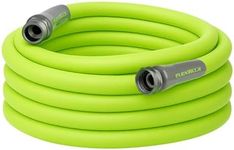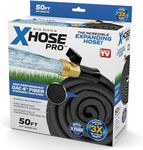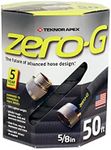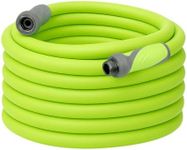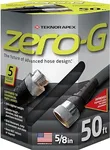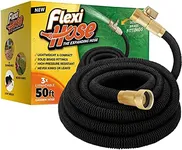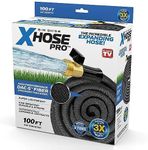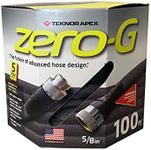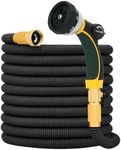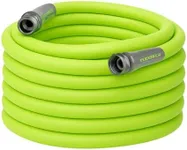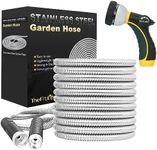Buying Guide for the Best Flexible Garden Hose
Choosing a flexible garden hose can make your gardening, cleaning, and outdoor chores much easier. The right hose should be easy to handle, durable, and suitable for your specific needs, whether that's watering plants, washing your car, or filling a pool. When shopping, it's important to look beyond just the price and consider the features that will make the hose convenient and long-lasting for your particular use.LengthThe length of a garden hose determines how far you can reach from your water source. Hoses typically come in lengths ranging from 25 to 100 feet. Shorter hoses (25-50 feet) are easier to store and manage, making them ideal for small gardens or patios. Medium lengths (50-75 feet) are versatile for most yards, while longer hoses (100 feet or more) are best for large gardens or if you need to reach distant areas. To pick the right length, measure the farthest distance you need to cover and add a little extra for flexibility, but avoid going much longer than necessary as longer hoses can be heavier and harder to handle.
DiameterThe diameter of a hose affects how much water flows through it. Common diameters are 1/2 inch, 5/8 inch, and 3/4 inch. A 1/2-inch hose is lightweight and suitable for light watering tasks, but it delivers less water. A 5/8-inch hose is the most common and offers a good balance between water flow and weight, making it suitable for most home uses. A 3/4-inch hose delivers the most water and is best for heavy-duty tasks or if you need to run multiple sprinklers. Choose the diameter based on how much water you need and how easy you want the hose to be to handle.
MaterialFlexible garden hoses are made from materials like rubber, vinyl, or expandable fabric. Rubber hoses are durable and can handle high water pressure, but they are heavier. Vinyl hoses are lighter and less expensive, but they may kink more easily and are less durable. Expandable hoses are lightweight and easy to store, as they shrink when not in use, but they may not last as long as traditional hoses. Consider how often you'll use the hose and whether you need something lightweight or more robust for frequent, heavy-duty use.
Flexibility and Kink ResistanceA hose's flexibility determines how easy it is to maneuver around corners and obstacles. Some hoses are designed to be kink-resistant, which means they are less likely to twist and block water flow. Highly flexible hoses are easier to coil and store, but sometimes they can be more prone to kinking if not designed well. If you need to move your hose around a lot or have a garden with many obstacles, look for hoses labeled as kink-resistant or with reinforced construction.
Fittings and ConnectorsThe ends of the hose, called fittings or connectors, are usually made of plastic or metal. Metal fittings (like brass) are more durable and less likely to leak, while plastic fittings are lighter but may wear out faster. Some hoses have quick-connect systems for easy attachment to faucets and nozzles. If you plan to connect and disconnect your hose often, or if you want a leak-free experience, look for sturdy metal fittings and consider quick-connect options.
WeightThe weight of a hose affects how easy it is to carry, drag, and store. Lighter hoses are easier to handle, especially for older adults or those with limited strength, but they may be less durable. Heavier hoses are often more robust and can handle higher water pressure, but they can be tiring to move around. Think about who will be using the hose and how often it will be moved to choose the right balance between weight and durability.
